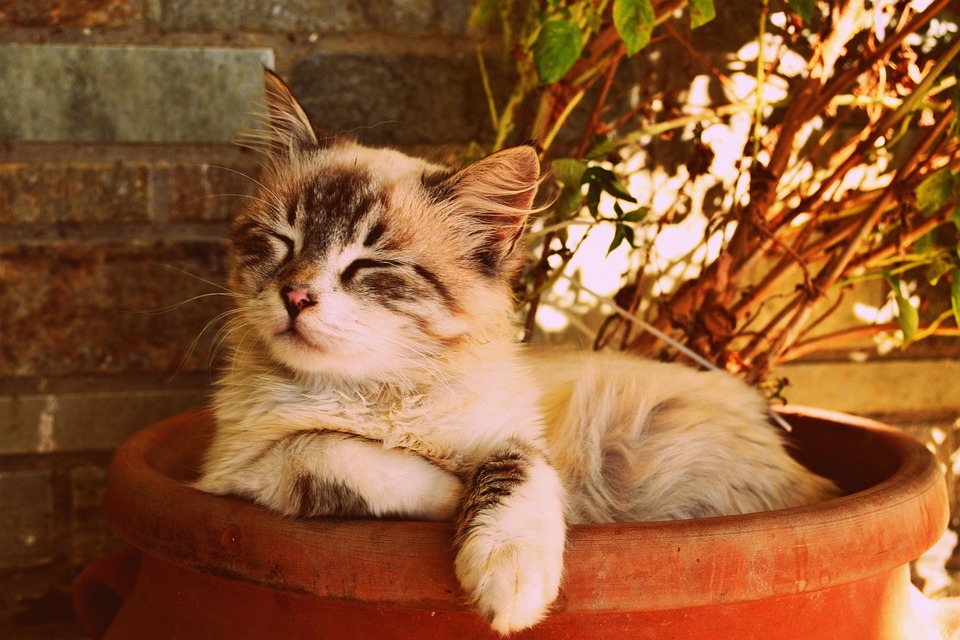Title: The Ultimate Guide to Training Cats to Use a Scratching Post
Introduction:
Cats are instinctively inclined to scratch, which can lead to damaged furniture and frustrated owners. One effective solution to this problem is training your cat to use a scratching post. In this article, we will provide you with valuable insights and step-by-step instructions on how to train your feline friend to embrace this behavior, keeping your furniture safe and your cat happy.
I. Understanding the Importance of a Scratching Post
– Why do cats scratch?
Cats scratch for a variety of reasons, including stretching their muscles, maintaining their claws, marking their territory, and expressing emotions.
– The benefits of a scratching post
A scratching post provides cats with an appropriate and satisfying outlet for their scratching instincts. It helps them keep their claws healthy, relieves stress, and prevents destructive behavior.
– Selecting the right scratching post
Choosing a scratching post that suits your cat’s preferences is crucial. Consider factors such as height, stability, material, and texture to ensure your cat will be attracted to it.
II. Preparing the Training Environment
– Choosing the ideal location for the scratching post
Place the scratching post in a prominent and accessible area where your cat spends a lot of time. Avoid placing it in isolated corners or areas where your cat doesn’t frequent.
– Creating an enticing environment
Make the area around the scratching post appealing to your cat. Add cat-friendly toys, treats, or catnip to encourage exploration and play.
– Providing alternative scratching surfaces
In addition to the scratching post, offer other scratching surfaces such as cardboard scratchers or sisal mats. This variety will allow your cat to choose and find what they prefer.
III. Introducing Your Cat to the Scratching Post
– Familiarizing your cat with the post
Allow your cat to investigate the scratching post at their own pace. Avoid forcing or intimidating them, as it may discourage their interest.
– Encouraging exploration and play around the post
Engage your cat in interactive play sessions near the scratching post. This will help them associate positive experiences with the post and build a connection.
– Using positive reinforcement techniques
Reward your cat with treats, praise, or petting whenever they show interest in or use the scratching post. This positive reinforcement will reinforce the desired behavior.
IV. Establishing the Scratching Post as a Preferred Option
– Making the post more attractive
Enhance the appeal of the scratching post by sprinkling it with catnip or attaching toys to it. This will make it more enticing for your cat to use.
– Scenting the post with catnip or pheromones
Cats are attracted to certain scents, including catnip or pheromones. Applying these scents to the scratching post can increase its attraction to your cat.
– Redirecting your cat’s attention away from furniture
If your cat starts scratching furniture, gently redirect their attention to the scratching post. Use toys or treats to lure them away from the undesirable surface.
V. Troubleshooting Common Challenges
– Dealing with initial resistance
If your cat shows resistance to using the scratching post, be patient and persistent. Offer alternative scratching surfaces, use positive reinforcement, and gradually decrease the availability of furniture for scratching.
– Preventing scratching in undesirable areas
Cover furniture or other surfaces that your cat tends to scratch with double-sided tape or aluminum foil. These textures are unpleasant for cats and can discourage scratching.
– Managing scratching aggression
If your cat becomes overly aggressive during scratching, interrupt the behavior with a loud noise or by gently redirecting them to a toy or treat. Seek advice from a professional if the aggression persists.
VI. Frequently Asked Questions (FAQs)
1. What if my cat refuses to use the scratching post?
Persistence and patience are key. Ensure the scratching post meets your cat’s preferences and use positive reinforcement to encourage them to use it.
2. Should I declaw my cat if training doesn’t work?
Declawing should be the last resort and is considered inhumane. There are alternative solutions, such as regular nail trimming and providing appropriate scratching surfaces.
3. Can I have more than one scratching post?
Yes, having multiple scratching posts in different areas of your home can increase the chances of your cat using them.
4. How long does it usually take for a cat to learn to use the scratching post?
The time it takes for a cat to learn varies. It can take anywhere from a few days to a few weeks for a cat to fully embrace the scratching post.
5. Can I train an older cat to use a scratching post?
Yes, older cats can be trained to use a scratching post. Follow the same training techniques and be patient with the process.
6. How can I prevent my cat from scratching carpeted surfaces?
Offer alternative scratching surfaces, such as sisal mats or cardboard scratchers, near the carpeted areas. Redirect your cat’s attention to these surfaces whenever they attempt to scratch the carpet.
Conclusion:
Training cats to use a scratching post is a crucial aspect of responsible pet ownership. By implementing the techniques and tips outlined in this guide, you can successfully redirect your cat’s natural scratching instincts towards an appropriate surface, saving your furniture and enhancing your cat’s overall well-being. Remember, patience and consistency are key when it comes to training your feline companion.








